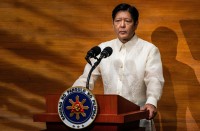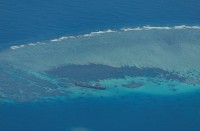MANILA, Jan. 7 – Cutbacks in the prices of petroleum and electricity with lower increases in the price of most food items brought headline inflation down to 2.7 percent in December 2014 from 3.7 percent in the previous month, according to the National Economic and Development Authority (NEDA) said in a statement.
This is the fourth consecutive month that headline inflation slowed down, which pulled average inflation for full-year 2014 to 4.1 percent. Thus, the government stayed within its inflation target of 3.0 to 5.0 percent for 2014.
“The lower inflation outturn in December bodes well for consumption growth in the fourth quarter of 2014. Also, this shows that government policies remain supportive of a manageable inflation rate,” said Economic Planning Secretary Arsenio M. Balisacan.
Core inflation, which excludes selected volatile food and energy prices, also eased to 2.3 percent from 2.7 percent in November 2014 and 3.2 percent in December 2013. For full-year 2014, it averaged 3.0 percent.
Meanwhile, December 2014 recorded contractions in the price indices of petroleum electricity, gas and other fuels (-8.3% from -2.6%) and operation of personal transport equipment (-6.0% from -1.2%).
“Electricity rates were lower year-on-year in December 2014 after a decline in generation and transmission charges was noted on the back of improved availability of power plants and lower cost of fuel,” the Cabinet official said. Meralco charges were down anew in December 2014 by 13 percent, equivalent to a reduction of PhP0.73 per kilowatt hour.
Moreover, the sharp decline in Dubai oil prices, which fell to its lowest levels since 2010, translated to lower domestic petroleum prices. Price reductions were recorded in December 2014 for unleaded gasoline prices (-19%), diesel (-26%), kerosene (-23%) and in liquefied petroleum gas or LPG (-32%).
Also, despite the holiday season, year-on-year food inflation in December 2014 slowed to 5.5 percent from 6.5 percent in the previous month. This is mainly due to high food prices in the same period of 2013 partly arising from typhoon Yolanda which hit the country in early November.
“The absence of new major economic shocks, which could considerably affect food supply, as well as the normalization of supply chain of other food products in part resulting from the augmentation of rice stocks from imports and the lifting of the expanded truck ban in September 2014, may have also contributed to the decline in inflation in December 2014,” said Balisacan..
Despite the low inflation figures, the government is still wary of possible inflation risks for 2015 such as pressures associated with higher water rates at the start of 2015 and the impact of destructions brought by typhoons “Ruby” and “Seniang” on prices of agricultural commodities.
“Given the lingering possibility of El Nino occurrence in the first quarter of 2015, we should intensify efforts to implement programs that will help the areas that are highly and moderately vulnerable to the adverse impact of a dry spell,” he said.
Balisacan also noted that logistical issues continue to pose risks of inflation. “While the easing of the truck regulation in Manila’s ports may have possibly contributed to the moderate inflation outturn, it is critical to continue exploring a more lasting solution to the congestion problem to avoid future disruptions in the domestic supply chain that could result in higher transportation costs,” he explained.(NEDA)







